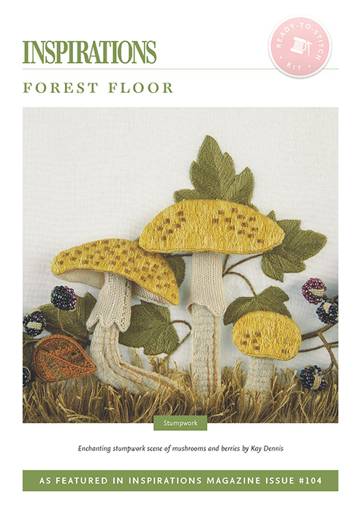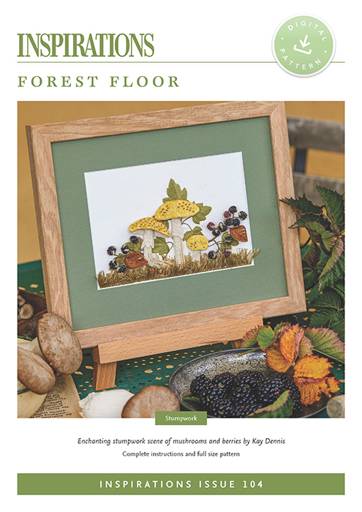Forest Floor by Kay Dennis
29TH NOVEMBER 2019 - ASU #214
The humble mushroom is a strange thing. Scientists deem it neither a plant nor an animal, rather it exists in a category of its own known as fungi. Humans have loved and feared the mushroom because, although it offers subtle, delicious flavours to the discerning palette, there are species which are so deadly that ingesting only a small amount can kill. Fungi grow on every continent of the world, including Antarctica, but the ‘good’ mushrooms – the ones that we all love to eat- require particular conditions to thrive.

Which takes us to Paris. Paris is one city which, conscious of environmental issues but also due to cost, congestion and lack of space, has seen a serious reduction in the number of cars owned and driven on its streets.

During the Parisian building boom in the 1960s, almost every apartment block and building was constructed with an underground car park to cater for the anticipated number of cars that growth would bring. However, in the 21st century, many of these car parks are now abandoned, sitting empty and acting as magnets for crime.

But what has all this got to do with mushrooms? Well, one urban farm organisation realised that these abandoned spaces were perfect opportunities in waiting. With city council permission, Cyberponics set up their inner-city mushroom farms, rejuvenating these unused underground spaces and turning them into economically successful enterprises.
Focusing primarily on white button mushrooms, oyster mushrooms and shiitake mushrooms, racks upon racks of carefully cultivated fungi are merrily growing in the darkened, underground spaces.
We would encourage you to consider this amazing versatility and environmental genius when you start stitching Kay Dennis’s glorious stumpwork mushroom piece ‘Forest Floor’ from Inspirations issue #104.

Kay has chosen to depict her mushrooms growing in the more traditional location of a forest floor where they appear healthy and robust. It’s amazing to think their Parisian city counterparts can achieve the same results seemingly another world away.
Kay has accompanied her fungi with sparkling, beaded blackberries and lush woodland grass, something you wouldn’t find in the car park farms!
‘Forest Floor’ incorporates a wonderful range of stitches and techniques sure to delight both the novice and expert stumpworker.
For example, the collars of the mushrooms are worked in delicate needlelace, giving a lifelike texture.

The grass is built up with Ghiordes knots or turkey stitch, and the blackberries themselves are realistically rendered using accurately coloured beads topped with needlewoven picots.

This piece is a pleasure to work as you will never get bored doing the same stitch. Our favourite elements are the slightly dried blackberry leaves worked in a subtly variegated silk.

The needleweaving, a marginally more complex stitch known as Williamson stitch, gives an almost perfect texture and complements the earthy colours of the mushrooms.

This beautifully worked stumpwork design seems to escape from its frame when completed, demonstrating that the forest, and in particular, the fungi, can’t ever be completely confined.
Whether growing in the cold of Antarctica, the wildness of the forest or the repurposed dark of subterranean Paris, mushrooms are a fascinating part of the natural world and Kay has done a marvellous job of capturing them in needle and thread.
Make Your Own Forest Floor

Step 1 – Purchase Project Instructions
Forest Floor by Kay Dennis is an enchanting stumpwork scene of mushrooms and berries.
Step 2 – Purchase Ready-To-Stitch Kit
The Inspirations Ready-To-Stitch kit for Forest Floor includes everything you need to re-create this charming scene: Fabrics (unprinted), felt, interlining, wire, embroidery threads, beads and needle.

Kit
Forest Floor - i104 Kit
Shop NowPlease Note: To cater for flexibility of purchase, instructions are not included with our kits. For step-by-step directions on how to create this project, please refer to our magazine or printed/digital patterns.


